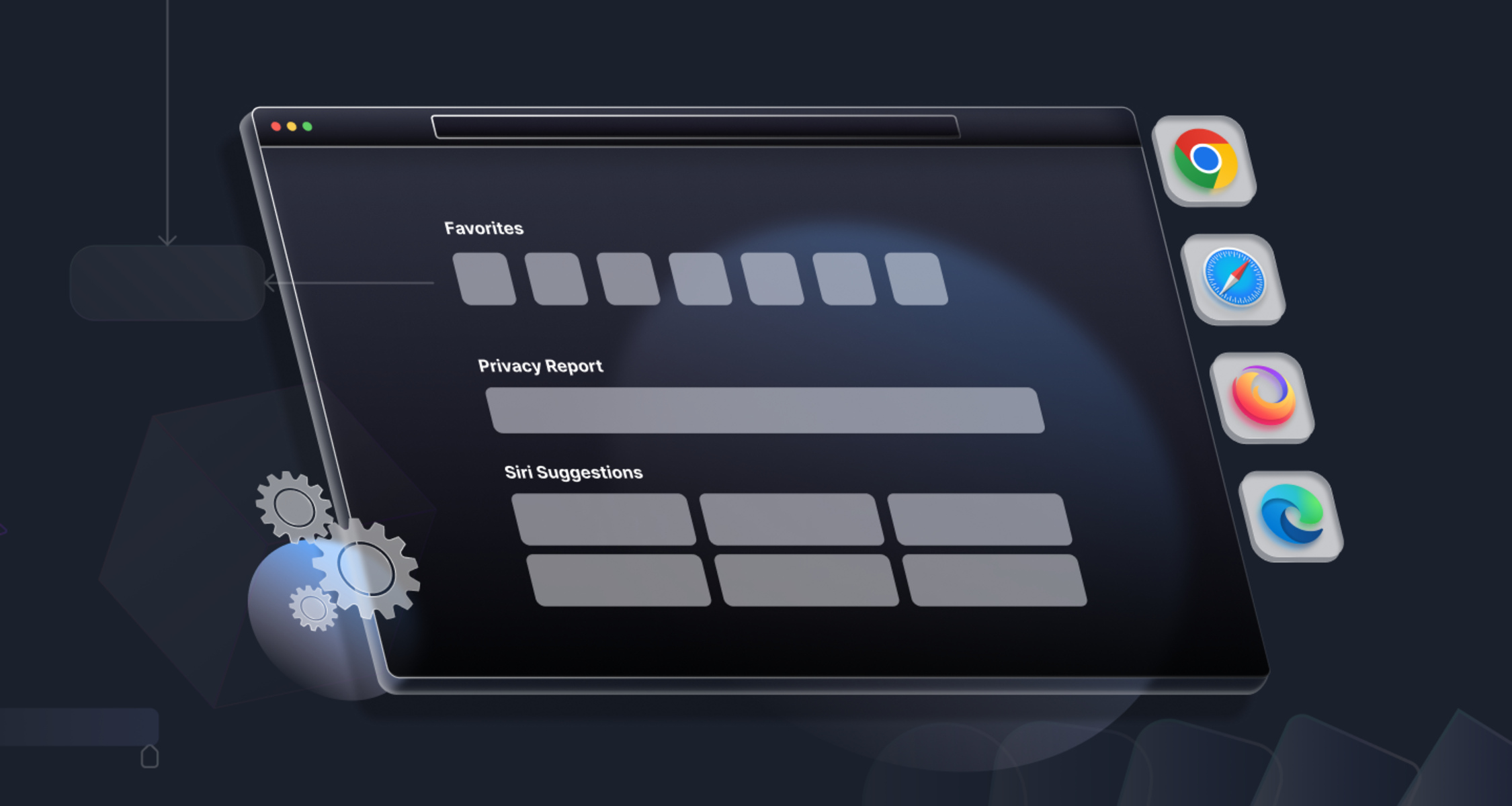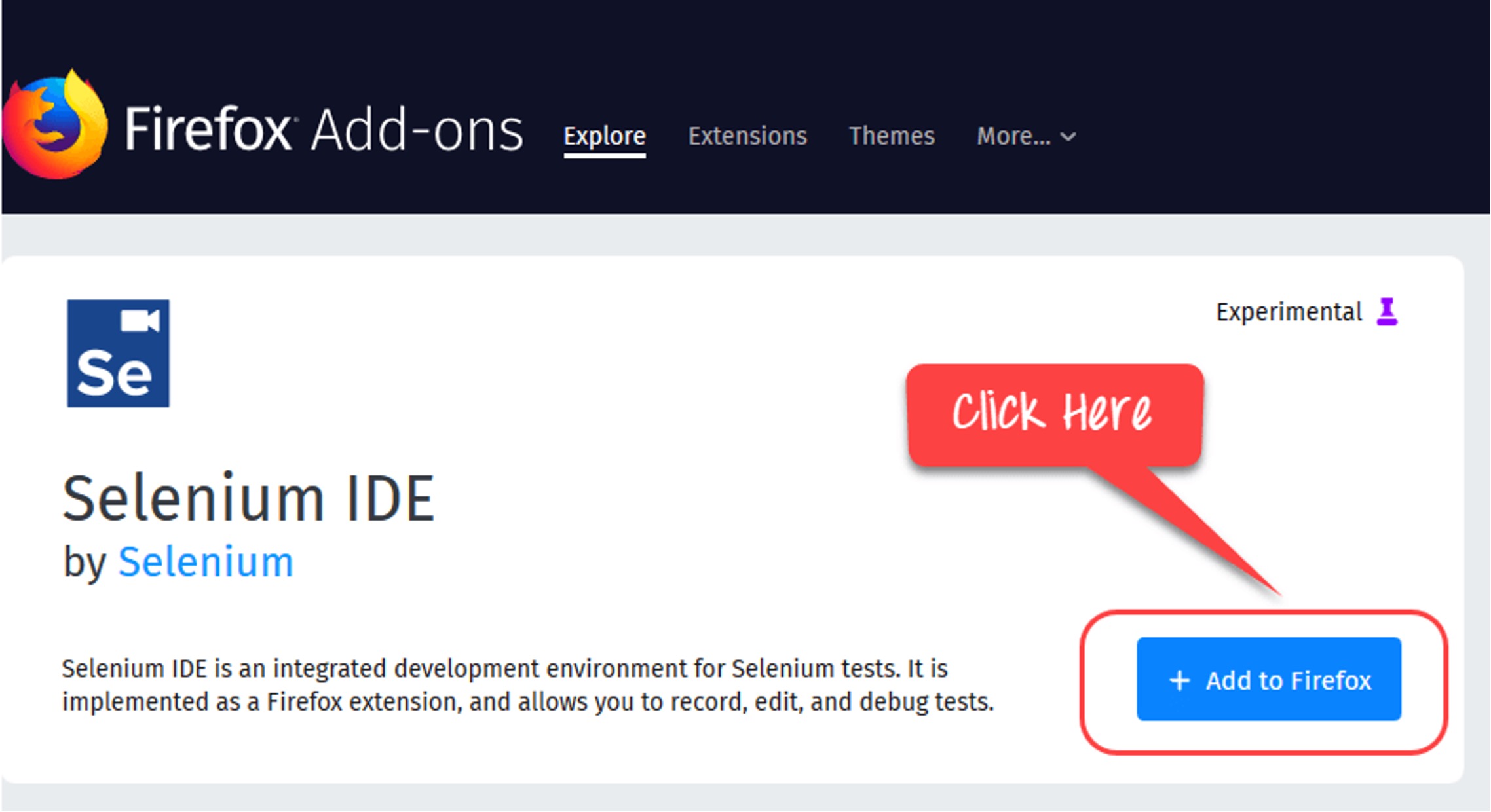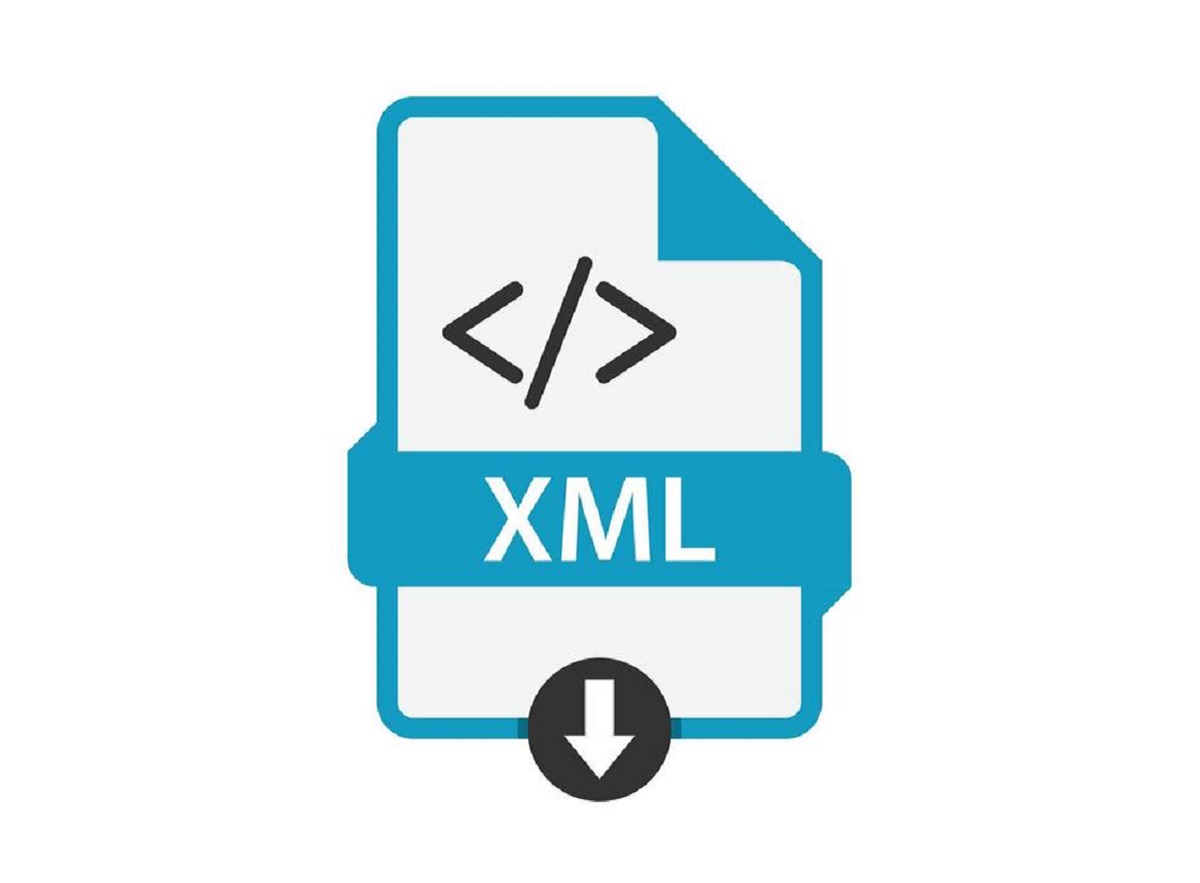Introduction
Browser automation has revolutionized the way we interact with the internet. It has become an indispensable tool for businesses, developers, and individuals seeking to streamline their online activities. By harnessing the power of automation, users can perform repetitive tasks, gather data, and execute complex workflows with unparalleled efficiency.
In today's fast-paced digital landscape, the ability to automate browser actions has emerged as a game-changer, offering a myriad of benefits and opportunities. Whether it's automating routine web interactions, extracting valuable information from websites, or testing web applications, browser automation has proven to be a versatile and indispensable asset.
As the digital realm continues to expand, the demand for seamless and efficient web experiences has skyrocketed. This has propelled browser automation to the forefront of technological innovation, empowering users to navigate the complexities of the online world with ease and precision.
In this article, we will delve into the intricacies of browser automation, exploring its definition, benefits, common tools, operational mechanisms, and real-world applications. By gaining a comprehensive understanding of browser automation, readers will unlock the potential to optimize their online endeavors, boost productivity, and elevate their digital capabilities.
Definition of Browser Automation
Browser automation refers to the process of automating web browser activities and tasks through the use of specialized software or scripts. This innovative technology enables users to replicate and execute a wide range of actions that would typically require manual intervention, such as form submissions, data extraction, navigation through web pages, and interaction with web elements.
At its core, browser automation empowers users to create automated workflows that mimic human interactions with web browsers. This includes clicking buttons, filling out forms, scrolling through web pages, and extracting data from websites. By leveraging browser automation, individuals and organizations can streamline repetitive tasks, enhance productivity, and achieve a higher level of efficiency in their online activities.
One of the key components of browser automation is the ability to script and schedule sequences of browser actions. This allows users to automate complex processes, such as web scraping, data validation, and testing of web applications. Moreover, browser automation can be utilized for tasks like web monitoring, where automated scripts continuously track and analyze specific web content for changes or updates.
Furthermore, browser automation plays a pivotal role in the realm of web testing and quality assurance. It enables developers and QA professionals to automate the testing of web applications across different browsers and platforms, ensuring consistent functionality and performance. This not only saves time and effort but also contributes to the overall reliability and robustness of web-based systems.
In essence, browser automation serves as a catalyst for optimizing web-based workflows, reducing manual intervention, and unlocking new possibilities for innovation and efficiency in the digital domain. By automating repetitive and time-consuming tasks, individuals and organizations can focus on higher-value activities, improve accuracy, and achieve a competitive edge in the ever-evolving online landscape.
Benefits of Browser Automation
Browser automation offers a plethora of compelling benefits that have reshaped the way individuals and organizations interact with the internet. By harnessing the power of automation, users can unlock a myriad of advantages that streamline workflows, enhance productivity, and drive innovation in the digital realm.
1. Time and Resource Efficiency
Browser automation significantly reduces the time and resources required to perform repetitive tasks and complex web interactions. By automating routine activities such as form submissions, data extraction, and web testing, users can achieve unparalleled efficiency and productivity gains. This allows individuals and businesses to allocate their resources to more strategic and high-value initiatives, ultimately maximizing their operational potential.
2. Enhanced Accuracy and Consistency
Automation eliminates the potential for human error, ensuring consistent and precise execution of browser activities. Whether it's data validation, web monitoring, or testing web applications, automated scripts and tools perform tasks with unwavering accuracy, minimizing the risk of manual discrepancies and inconsistencies. This fosters a reliable and dependable online environment, critical for businesses and developers seeking to maintain quality and integrity in their web-based operations.
3. Scalability and Flexibility
Browser automation empowers users to scale their web activities effortlessly, accommodating growing demands and evolving requirements. Whether it's extracting data from multiple sources, conducting comprehensive web testing, or automating complex workflows, the scalability of browser automation tools enables seamless adaptation to changing needs. This flexibility is invaluable for businesses and individuals navigating the dynamic landscape of the internet, allowing them to expand their digital capabilities without constraints.
4. Improved Productivity and Innovation
By automating repetitive and time-consuming tasks, individuals and organizations can redirect their focus towards innovation and strategic endeavors. Browser automation liberates valuable time and cognitive resources, enabling users to explore new opportunities, develop creative solutions, and drive innovation in their online initiatives. This shift towards higher-value activities fosters a culture of continuous improvement and ingenuity, propelling businesses and developers towards greater achievements in the digital sphere.
5. Competitive Advantage
Embracing browser automation confers a competitive edge in the digital arena, enabling users to stay ahead of the curve and outperform their counterparts. By leveraging automation for web testing, data extraction, and web monitoring, businesses can enhance their operational efficiency, deliver superior user experiences, and maintain a competitive edge in the market. This strategic advantage is pivotal in a landscape where digital prowess and agility are paramount for success.
In essence, the benefits of browser automation extend far beyond mere convenience, offering a transformative approach to navigating the complexities of the online world. By harnessing the efficiency, accuracy, scalability, and innovation facilitated by browser automation, users can elevate their digital capabilities, achieve operational excellence, and unlock new frontiers of productivity and success.
Common Tools for Browser Automation
When it comes to browser automation, a diverse array of tools and frameworks are available to cater to the unique needs and preferences of users. These tools are designed to simplify the process of automating browser activities, offering a wide range of features and capabilities to streamline web interactions and workflows. Here are some of the most common and widely used tools for browser automation:
-
Selenium: Selenium stands out as one of the most popular and versatile browser automation frameworks. It provides a comprehensive suite of tools for automating web browsers across different platforms and browsers. With robust support for multiple programming languages, Selenium empowers users to create powerful and scalable automation scripts, making it a preferred choice for web testing and web application automation.
-
Puppeteer: Developed by Google, Puppeteer has gained significant traction as a reliable and efficient browser automation tool. It offers a high-level API for controlling headless Chrome and provides a seamless environment for automating tasks such as web scraping, testing, and generating screenshots. Puppeteer's intuitive interface and extensive documentation make it an attractive option for developers and businesses seeking a user-friendly automation solution.
-
Cypress: Cypress has emerged as a popular choice for browser automation, particularly for web testing and end-to-end testing of web applications. Its unique architecture and real-time testing capabilities set it apart, allowing users to conduct thorough testing in a controlled environment. Cypress's ability to handle modern web technologies and its emphasis on user experience make it a compelling option for organizations focused on delivering high-quality web applications.
-
AutoIt: AutoIt is a powerful scripting language designed for automating the Windows GUI and general scripting. While it is not specific to browser automation, AutoIt's robust capabilities make it a valuable tool for automating web interactions on the Windows platform. Its ability to simulate keystrokes, mouse movements, and window manipulation enables users to automate a wide range of browser-related tasks with precision and efficiency.
-
Katalon Studio: Katalon Studio offers a comprehensive integrated environment for web and mobile app automation testing. With its intuitive interface and extensive feature set, Katalon Studio simplifies the process of creating, executing, and managing automated tests for web applications. Its support for both manual and automated testing, along with built-in reporting and analytics, makes it a versatile choice for organizations seeking a unified platform for their testing needs.
These tools represent just a fraction of the diverse landscape of browser automation solutions available to users. Each tool brings its unique strengths and capabilities, catering to different use cases and preferences. Whether it's web testing, web scraping, or automating complex browser workflows, the availability of these tools empowers users to harness the efficiency and precision of automation, ultimately enhancing their digital capabilities and productivity.
How Browser Automation Works
Browser automation operates by utilizing specialized tools, frameworks, and scripts to replicate and execute a wide range of actions that would typically require manual intervention when interacting with web browsers. The fundamental principle behind browser automation involves emulating human interactions with web browsers, enabling the automation of tasks such as form submissions, data extraction, navigation through web pages, and interaction with web elements.
At the core of browser automation lies the ability to script and schedule sequences of browser actions. This involves creating automated workflows that mimic human interactions with web browsers, allowing for the seamless execution of complex processes such as web scraping, data validation, and testing of web applications. These automated scripts and tools are designed to interact with web elements, simulate user inputs, and extract data from web pages, all while operating within the browser environment.
One of the key components of browser automation is the utilization of browser automation frameworks and tools such as Selenium, Puppeteer, and Cypress. These frameworks provide a rich set of functionalities for controlling web browsers, enabling users to automate a diverse array of tasks with precision and efficiency. By leveraging the capabilities of these frameworks, users can create automated scripts that interact with web elements, navigate through web pages, and extract valuable data from websites.
Furthermore, browser automation plays a pivotal role in web testing and quality assurance. It allows developers and QA professionals to automate the testing of web applications across different browsers and platforms, ensuring consistent functionality and performance. By automating the testing process, browser automation tools contribute to the overall reliability and robustness of web-based systems, minimizing the risk of manual errors and discrepancies.
In essence, browser automation works by harnessing the power of specialized tools and frameworks to automate web browser activities and tasks. By emulating human interactions with web browsers and leveraging automation scripts, users can streamline repetitive tasks, enhance productivity, and achieve a higher level of efficiency in their online activities. This transformative approach to web interactions has revolutionized the way individuals and organizations navigate the complexities of the online world, unlocking new frontiers of innovation and efficiency.
Use Cases of Browser Automation
Browser automation presents a myriad of compelling use cases that have redefined the landscape of web interactions and digital workflows. From streamlining repetitive tasks to enabling sophisticated testing and data extraction, the versatility of browser automation extends across various domains, empowering users to achieve unparalleled efficiency and productivity.
Web Testing and Quality Assurance
One of the primary use cases of browser automation is in the realm of web testing and quality assurance. Automation tools such as Selenium, Puppeteer, and Cypress enable developers and QA professionals to automate the testing of web applications across different browsers and platforms. This ensures consistent functionality and performance, significantly reducing the time and effort required for comprehensive testing. By automating the testing process, browser automation contributes to the overall reliability and robustness of web-based systems, minimizing the risk of manual errors and discrepancies.
Web Scraping and Data Extraction
Browser automation serves as a powerful tool for web scraping and data extraction, allowing users to gather valuable information from websites with precision and efficiency. Automated scripts can navigate through web pages, interact with web elements, and extract structured data, enabling businesses to collect market insights, monitor competitors, and aggregate relevant content for analysis. The ability to automate data extraction streamlines the process of gathering and processing information, providing a competitive edge in data-driven decision-making.
Form Submissions and User Interactions
Automating form submissions and user interactions is another prominent use case of browser automation. Whether it's filling out online forms, submitting data to web applications, or simulating user interactions, automation tools facilitate the seamless execution of these tasks. This is particularly valuable for businesses handling large volumes of form submissions, user registrations, or data entry processes, allowing them to optimize their workflows and minimize manual intervention.
Web Monitoring and Content Validation
Browser automation plays a crucial role in web monitoring and content validation, enabling users to track and analyze specific web content for changes or updates. Automated scripts can continuously monitor websites for updates, detect changes in content or layout, and trigger alerts based on predefined criteria. This use case is instrumental for businesses and organizations seeking to stay informed about market trends, track competitor activities, and ensure the integrity of their online content.
Automated Workflows and Task Automation
Beyond specific use cases, browser automation empowers users to create custom automated workflows tailored to their unique requirements. Whether it's automating complex business processes, streamlining repetitive tasks, or orchestrating multi-step interactions, the flexibility of browser automation tools allows for the seamless execution of diverse workflows. This capability enhances operational efficiency, reduces manual effort, and fosters a culture of innovation and productivity in the digital domain.
In essence, the use cases of browser automation span a wide spectrum of applications, offering a transformative approach to web interactions and digital workflows. By harnessing the efficiency, precision, and versatility of browser automation, users can unlock new frontiers of productivity, innovation, and operational excellence in the ever-evolving online landscape.
Conclusion
In conclusion, browser automation stands as a transformative force in the digital realm, offering a wealth of benefits, diverse tools, and compelling use cases that have reshaped the way individuals and organizations interact with the internet. By harnessing the power of automation, users can streamline repetitive tasks, enhance productivity, and drive innovation in their online endeavors.
The evolution of browser automation has ushered in a new era of efficiency and precision, enabling users to automate web interactions, extract valuable data, and conduct comprehensive testing with unparalleled ease. From the robust capabilities of automation frameworks such as Selenium and Puppeteer to the diverse use cases spanning web testing, data extraction, and automated workflows, browser automation has emerged as a cornerstone of digital excellence.
The benefits of browser automation, including time and resource efficiency, enhanced accuracy, scalability, and improved productivity, underscore its pivotal role in empowering users to navigate the complexities of the online world with confidence and agility. Moreover, the availability of common tools such as Cypress, AutoIt, and Katalon Studio has democratized the accessibility of browser automation, catering to a wide spectrum of user preferences and requirements.
As the digital landscape continues to evolve, the significance of browser automation in driving operational excellence, fostering innovation, and maintaining a competitive edge cannot be overstated. Whether it's automating web testing to ensure consistent functionality, extracting valuable data for informed decision-making, or orchestrating custom automated workflows, browser automation has become an indispensable asset for businesses, developers, and individuals alike.
In essence, the journey through the intricacies of browser automation unveils a world of possibilities, where efficiency, precision, and innovation converge to redefine the dynamics of web interactions. By embracing browser automation, users can elevate their digital capabilities, achieve operational excellence, and embark on a path towards sustained success in the dynamic and ever-expanding digital landscape.

























